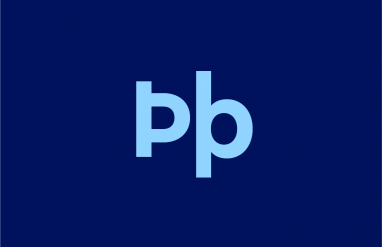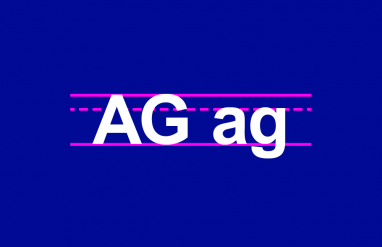By Lyndsey Gresehover
You’ve completed the brainstorming and research. You have created an essay outline that serves as your roadmap (or “skeleton” as some call it) and have even finished the writing. However, there is still one more equally important step to ensure your paper has all the required elements … your writing checklist.
Checklists are tools we use in lots of things we do. Think about those to-do lists you make, the sticky note reminders you leave around the house, and even the alerts you set up and save on your phone. All of these are strategies to remind ourselves of what we need to do. The same goes for writing checklists.
An easy way to make certain that you have included the essential components in writing a final paper is to break down the checklist into seven areas:
- Organization
- Mechanics
- Word choice
- Introduction paragraph
- Body paragraphs
- Conclusion paragraph
- Formatting and finishing touches
Then take a look into each area and focus on exactly what is needed.
1. Organization ✅
- Did you include the correct number of paragraphs? Depending on the type of paper you’re writing, this can vary. It’s important to discuss the minimum and maximum number of paragraphs with your teacher.
- Are your paragraphs in a logical and cohesive order?
- Does your paper provide a clear focus?
Learn more about the importance and structure of a thesis statement at our article for the term.
2. Mechanics ✅
- Did you read your paper out loud to check for any grammatical errors? Did you write in complete sentences, punctuate correctly, and use a spell checker? Dictionary’s Grammar Coach™ uses machine learning technology uniquely designed to catch grammar and spelling errors.
- Are you varying sentence structure? You want to use a combination of simple, compound, complex, and compound-complex sentences.
3. Word choice ✅
- Are you using effective, age-appropriate vocabulary words?
- Did you use sensory and/or figurative language in your writing? This makes it more entertaining for the reader and is a great way to describe and show comparisons in your writing.
- Do you include strong adjectives and verbs? For example, instead of using the verb ran, you could use dart, dash, or scurry. Again, a great idea would be to take advantage of Dictionary’s Grammar Coach™. Its Synonym Swap will find the best nouns, adjectives, and more to guide you toward clearer, stronger, writing.
4. Introduction paragraph ✅
- Check to see that you included a strong hook that will grab the reader’s attention. An engaging hook could be a quote, statistic, fact, or anecdote.
- Did you include background information on your topic?
- Does your thesis statement include a claim as well as reasons to support the claim?
- Is your thesis the last sentence in the intro paragraph?
5. Body paragraphs ✅
- Does each body paragraph begin with a topic sentence that introduces your reason for that paragraph?
- Does each body paragraph have at least two pieces of evidence from outside sources (trusted website, book, etc.)?
- Did you properly cite any evidence that was not your own using either quotations or stating where the information was found?
- Did every body paragraph include a concluding statement?
6. Conclusion paragraph ✅
- Did you restate the thesis statement without saying exactly what you stated in the introduction paragraph? This time, it should force the reader to think even deeper about the topic.
- Did you summarize the main points or reasons addressed in the paper?
- Was your concluding statement a call to action that will force the reader to believe in what was written?
Start your conclusion off right with these nuanced alternatives to saying “in conclusion.”
7. Formatting and finishing touches ✅
Formatting of the paper
An area that is often overlooked is how to correctly format the paper. First, make sure that the font you use is Times New Roman size 12, and double space all lines. Both MLA and Chicago formatting styles suggest doing so for legibility. The rest of the style guidelines cited will refer to MLA style.
Title page
According to MLA style, you should format a title page like so:
- The title page should include the page number at the top, on the right side of page.
- In the center of the paper, halfway down the page, put the title of your paper.
- The next line should have your first and last name.
- On the next line, put your teacher’s name.
- On the last line, add the date.
- Again, all lines should be double-spaced, even the title page.
In-text citations
When citing information from outside sources within your paper, there are a couple things to keep in mind. MLA style is one citation style widely used by schools, academic departments, and instructors. According to MLA style:
- When using someone else’s information, you must cite the source by putting in parentheses the author’s last name followed by a comma and the page or paragraph number you found the information on, like so: (Cisneros 56)
- If you’re citing the information word for word, the information must be placed in quotation marks: In The House on Mango Street, Esperanza’s aunt encourages her to keep writing, as “It will keep you free” (Cisneros 56).
Works cited page
The following information will be needed when citing a source on your works cited page.
- Author
- Title of source
- Title of the container
- Other contributors
- Publisher
- Publication Date
- Location of the source (such as URL or page range)
For example:
Nordhaus, William D. “After Kyoto: Alternative Mechanisms to Control Global Warming.” American Economic Review, vol. 96, no. 2, 2006, pp. 31-34.
Using a free tool such as Easybib.com can help you to format your works cited page correctly.
Submitting your paper
Another discussion that you will want to have with your teacher (if he/she hasn’t already made this clear) is how they would like you to submit the paper. Do they want you to print the paper and turn it in in person, or would they like you to submit the paper digitally? Depending on the course and what learning management system (LMS) is used (Blackboard, Canvas, Google Classroom, Schoology, etc.) you will likely have the assignment created by the teacher and then submit it accordingly. Again, this varies based on the LMS that is used.
Following a coherent checklist will help you not only to become a better writer, but it will also make certain that you include all of the necessary elements that make up a great paper.
In addition, it’s important to have a peer look over your paper using the checklist. Having a double set of eyes is always helpful as the peer reviewer may catch mistakes that you missed or offer ideas that you didn’t think of originally.
To help get you started using the checklist strategy, we have an interactive digital and printable list that incorporates all of the necessary requirements that should be included in your paper. You can access this resource here. Feel free to print if you would like a checklist that you can write on.
An extra effort now will pay off in the long run when you turn in a final paper that impresses your teachers!
Lyndsey Gresehover is a middle school ELA teacher, curriculum designer, and published blogger. You can view her tech-infused, innovative resources at her Teachers Pay Teachers store, Lit with Lyns. She also has a blog by the same name, which can be found at LitwithLyns.com where she shares ideas and resources for middle school English/Language Arts. For more by Lyndsey, read: Does The Million Word Gap Exist? | 10 Tips For Giving A Memorable Final Presentation In The Digital Age














